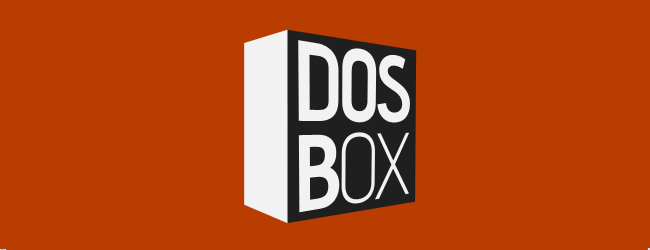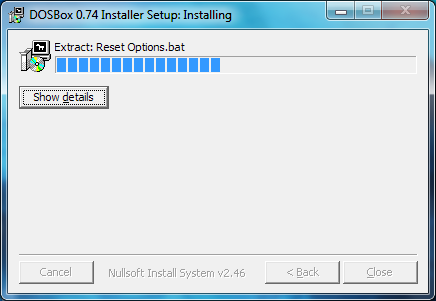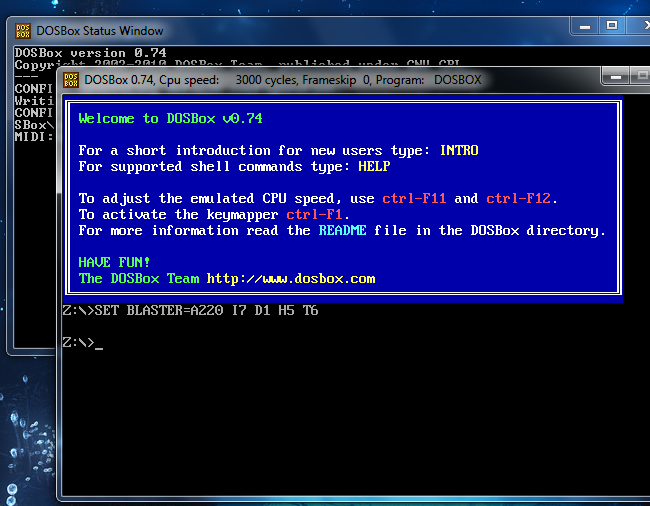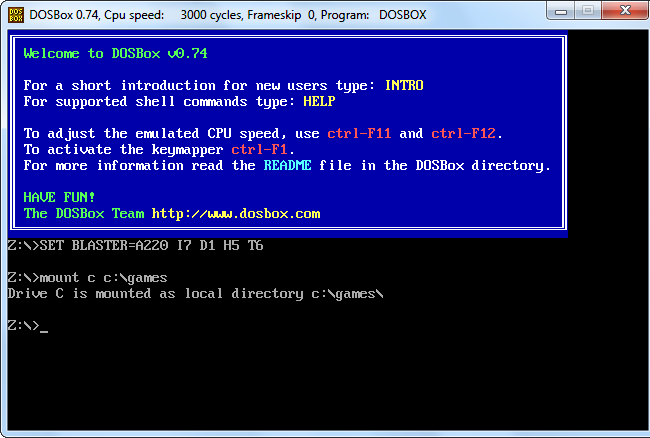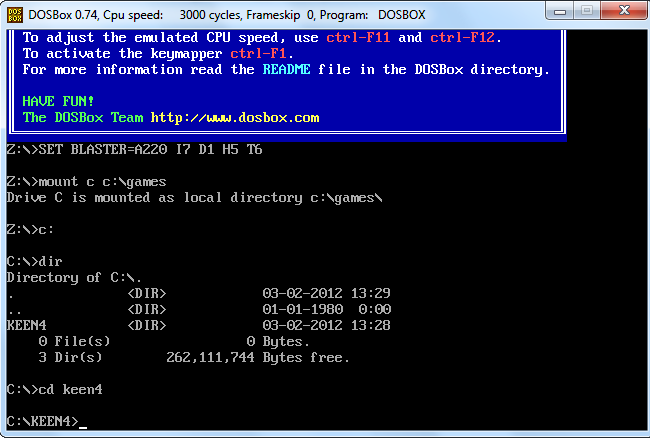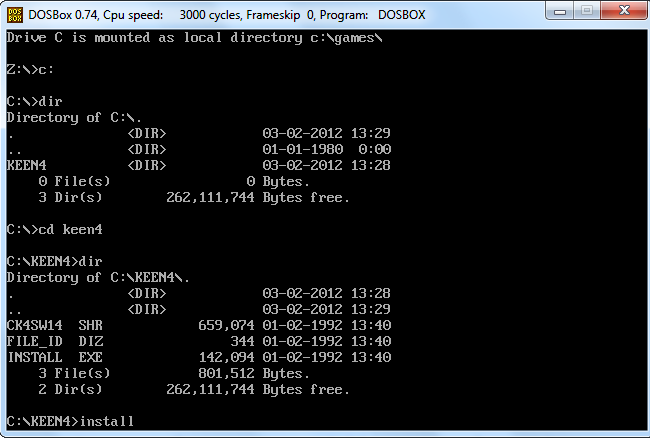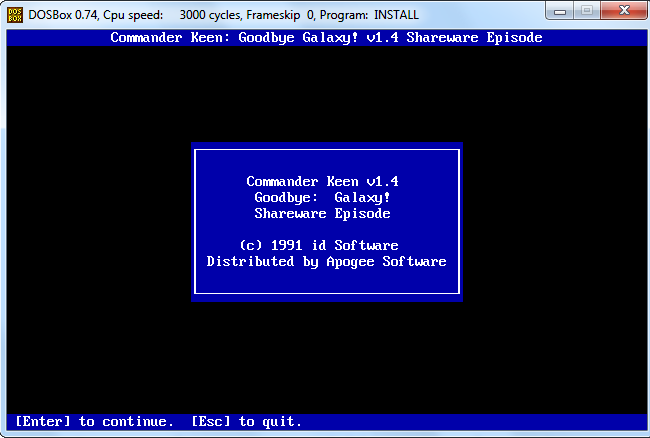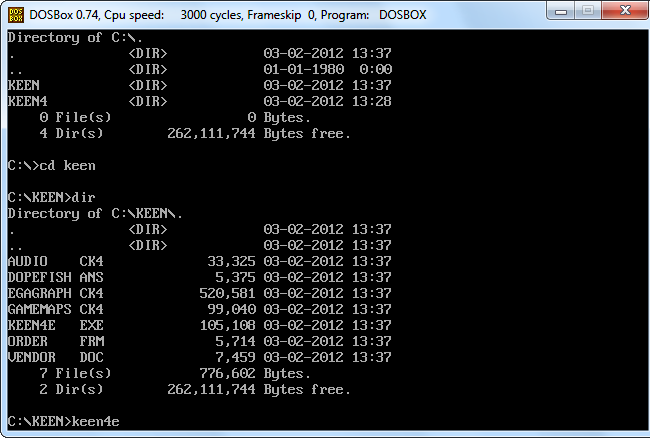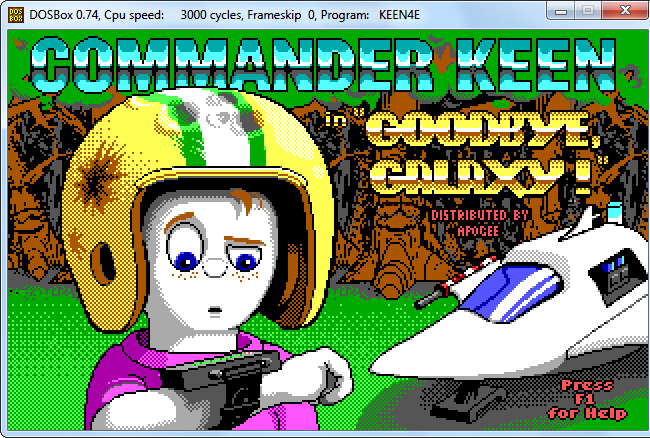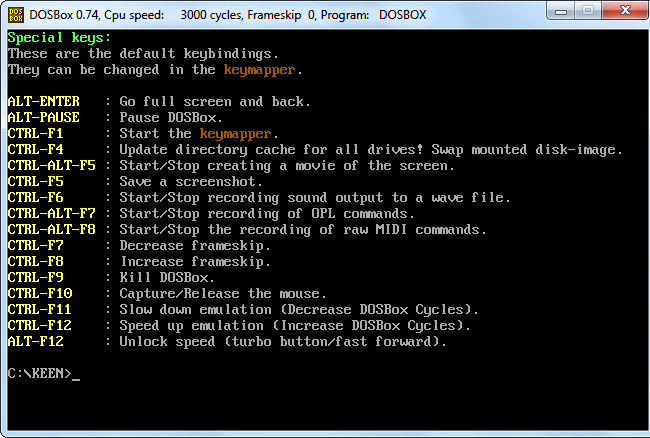Quick Links
New versions of Windows don't fully support classic DOS games and other old applications -- this is where DOSBox comes in. It provides a full DOS environment that runs ancient DOS apps on modern operating systems.
We've written about using the D-Fend Reloaded front-end for DOSBox in the past, but what if you just want to use DOSBox itself? We'll show you to how to mount directories, use DOSBox's internal commands, execute programs and use DOSBox's keyboard shortcuts like a pro.
Getting Started
DOSBox is available as a free download from the DOSBox website. It's not just for Windows -- installers are available for Mac OS X, Linux and other UNIX-like systems. If you're using Ubuntu, you'll find DOSBox available in the Ubuntu Software Center.
You'll also need the game or application you want to run. If you have an old floppy disk, it's time to pull it out. If the game was available as shareware, you're in luck -- you should be able to find it online. Most DOS games are fully compatible, but DOSBox's homepage hosts a compatibility list so you can check your favorite game's compatibility.
Mounting Directories
Once it's installed, you can fire DOSBox up from your desktop or Start menu. You'll get two windows -- a status window and the main DOSBox window. You can ignore the status window.
(As readers have noted, you can also run a program by dragging and dropping its EXE file onto DOSBox's application icon, so feel free to give that a try.)
Before you run a game, you'll have to mount its directory. DOSBox's environment is separate from your computer's file system. In other words, the C: drive in DOSBox is completely separate from the C: drive on your computer.
Here's an example mount command:
mount c c:\games\
This command mounts the C:\Games directory on your computer as the C: drive in DOSBox. Replace c:\games with the location of the games directory on your computer.
Add the -t cdrom switch if you're mounting a CD-ROM. For example, the following command takes the CD-ROM drive at D: on your computer and mounts it as the C: drive in DOSBox:
mount c D:\ -t cdrom
Navigating Around and Running Applications
Once you've got your game files mounted, you can type C: and press Enter to switch to DOSBox's C: drive.
Use the dir command to list the contents of the current directory and the cd command, followed by the name of a directory, to change to a directory. Use the cd .. command to go up a directory.
Type the name of an EXE file in the current folder to execute that program. You may have to run an install program before playing your game or running your application.
If you do, install the game like you would on a normal DOS system.
Once it's installed, you can navigate to the game's EXE file and run it by typing its name.
At this point, you're ready to play. You'll have to repeat the mount process each time you restart DOSBox, although you'll only have to install and configure the game once.
Keyboard Shortcuts
DOSBox has a variety of keyboard shortcuts. Here are the most essential ones:
Alt-Enter switches between full-screen and windowed modes.
If a game runs too fast, you can slow it down by pressing Ctrl-F11. Likewise, you can speed up slow games by pressing Ctrl-F12. DOSBox's emulated CPU speed, displayed in its title bar, will change each time you press these keys.
Type the intro special command to see a full list of DOSBox's shortcut keys.
DOSBox can also run DOS programs that aren't games -- including the Windows 3.1 operating system itself -- but games are its main use case. The DOS programs people used to rely on have been replaced, but classic games can never be replaced.

